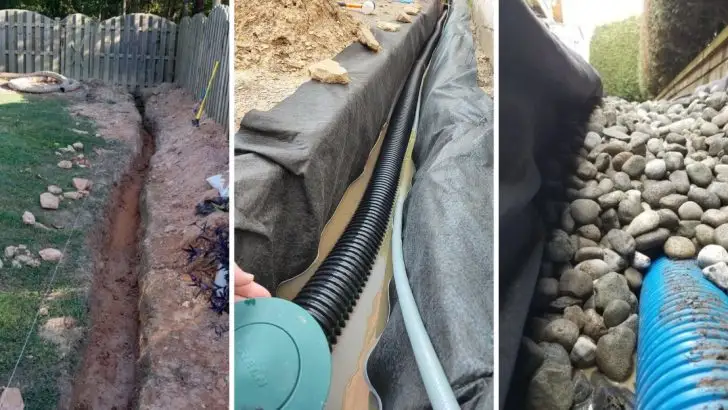Installing a French drain seems straightforward—dig a trench, lay some pipe, cover it up—but it’s easy to miss a detail that ends up causing more problems than it solves. Suddenly, that soggy patch in your yard is still there, or worse, the water’s pooling somewhere new. The good news? Most of these issues come down to a few common mistakes that are easy to avoid once you know what to watch for.
This list breaks down the most frequent missteps people make when installing French drains, along with simple fixes that can get things back on track. Whether your drain isn’t working as well as you’d hoped or you’re planning your first one, a little extra know-how can save you time, money, and a whole lot of mud.
Incorrect Slope
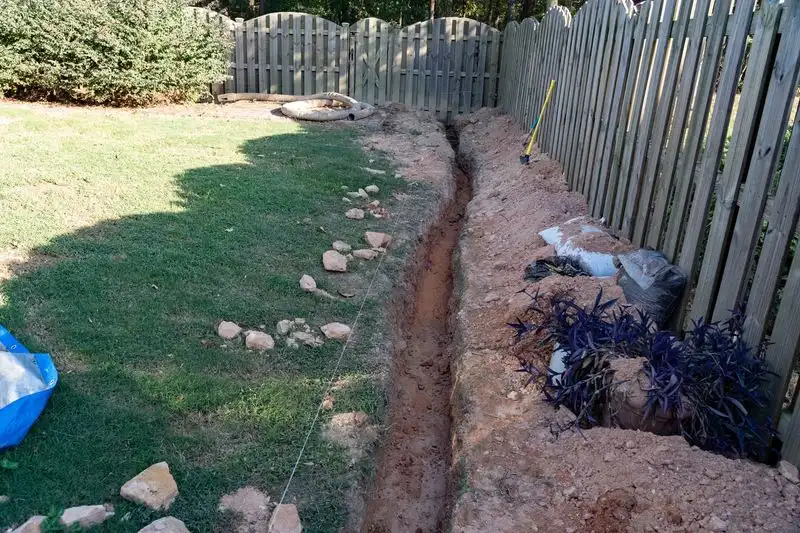
“Did you know that the slope of your French drain is crucial for efficient drainage? A common mistake is not providing a sufficient slope, leading to water pooling instead of flowing away. The ideal slope should be about 1% or 1 inch drop per 10 feet of length. Without this gradient, water stagnates, defeating the drain’s purpose. To fix this, measure your yard’s grade and adjust the trench accordingly. Use a level to ensure precision. Keeping the slope consistent ensures water flows away seamlessly.”
Improper Pipe Placement
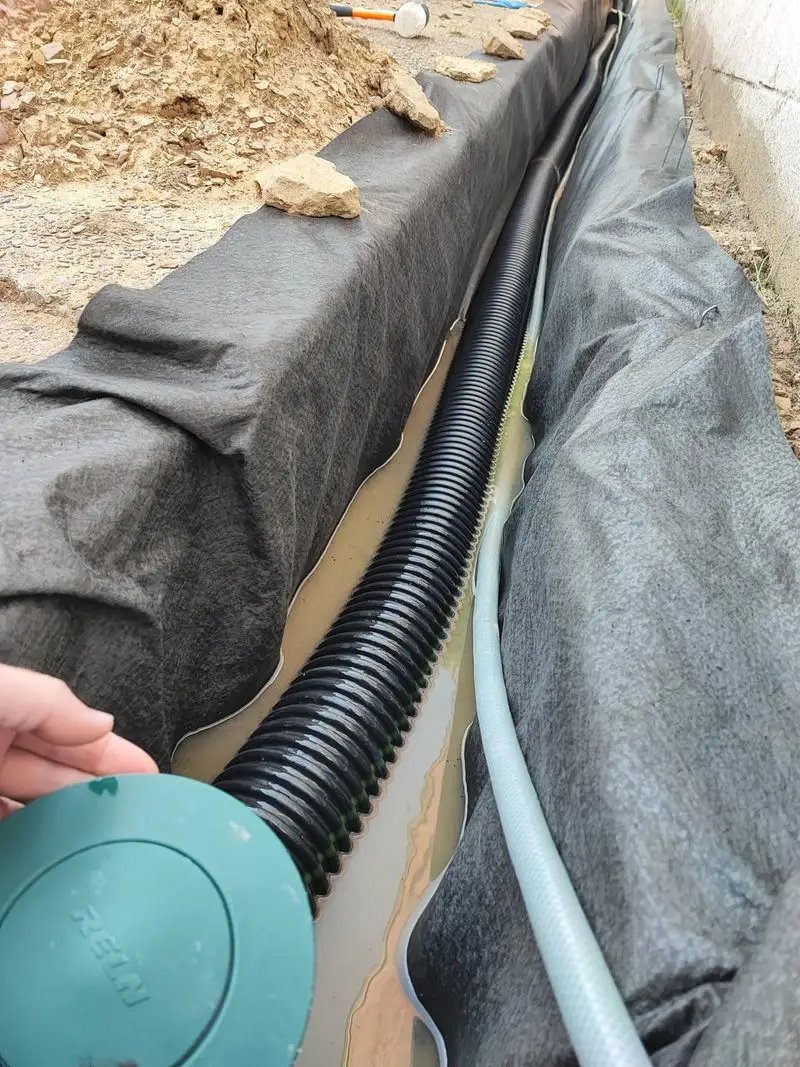
“Picture this: You’ve lined your trench, but the pipe placement is all wrong. Placing the pipe too high or too low can disrupt the drainage process. Ideally, the pipe should sit at the trench’s base, ensuring water is captured and directed away. Incorrect placement leads to ineffective water management and soggy lawns. Adjusting the pipe’s position within the trench is key. Ensure it’s securely seated, and check for any obstructions that might prevent proper water flow. This adjustment ensures effective drainage and a dry yard.”
Using Wrong Gravel Type
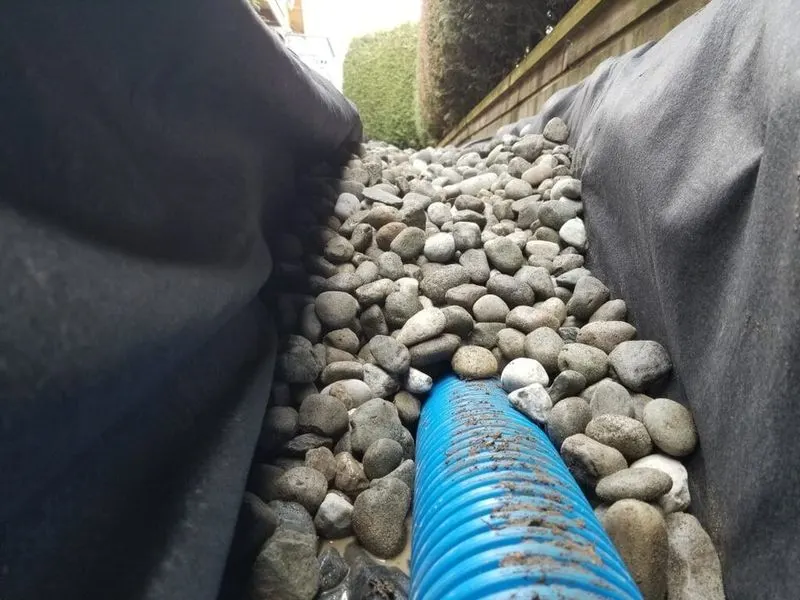
“Imagine using decorative rocks instead of proper drainage gravel for your French drain. The wrong gravel type can lead to clogs and inefficient drainage. For optimal performance, clear, angular gravel that doesn’t compact easily is essential. It allows water to flow freely while filtering debris. To fix this mistake, replace decorative stones with the correct gravel type, ensuring at least 12 inches of gravel surround the pipe. This setup promotes water movement and prevents blockages, keeping your lawn dry and healthy.”
Lack of Perforations in Pipe
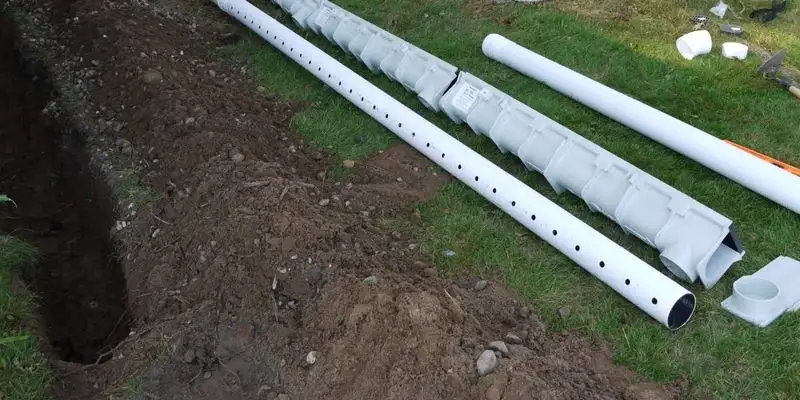
“Have you ever considered that perforations in the drain pipe are not just a suggestion but a necessity? Without these holes, water cannot enter the pipe to be redirected. A solid pipe in a French drain system is a common yet critical mistake. To solve this, ensure you use perforated pipes, which allow water to flow into the pipe from the surrounding soil. This simple change can drastically improve your system’s efficiency, preventing the dreaded muddy lawn and ensuring proper drainage.”
Insufficient Filter Fabric
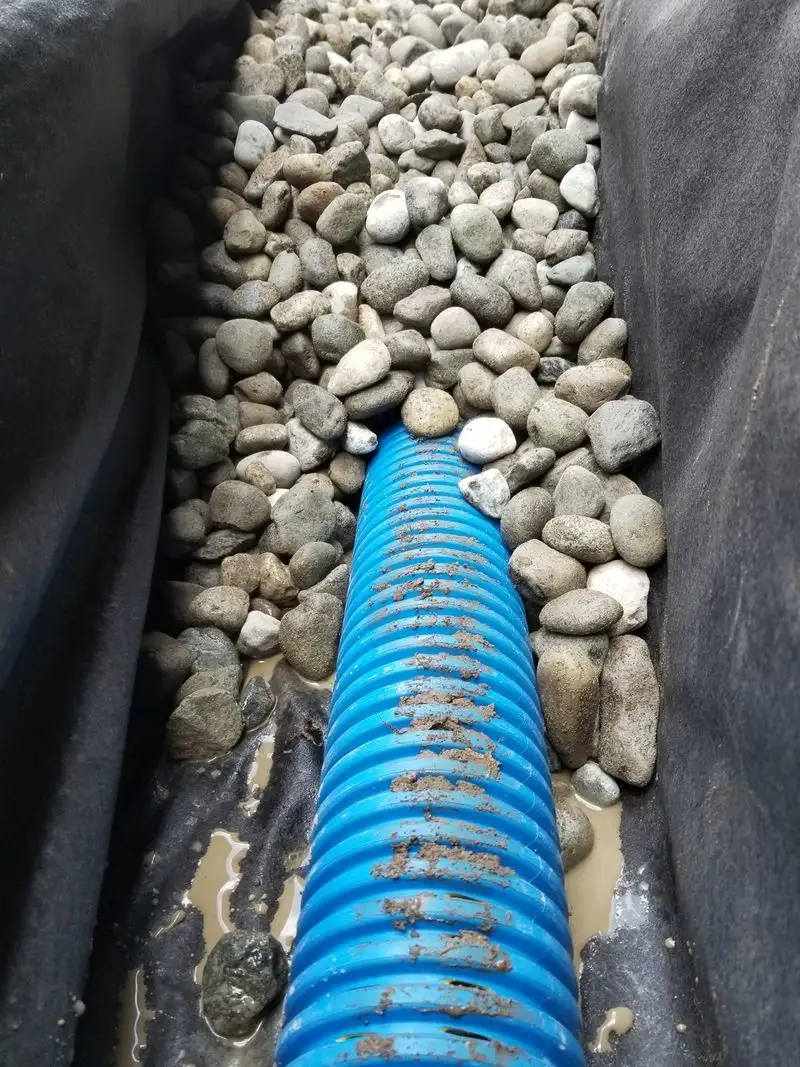
“Filter fabric might seem insignificant, but its absence can lead to a clogged system. Without it, sediment infiltrates the gravel and pipe, blocking water flow. Envision a drain constantly clogged with debris—frustrating! To prevent this, ensure your French drain includes a robust filter fabric layer. This fabric keeps sediment at bay while allowing water through, maintaining efficient drainage. Wrap the pipe and gravel securely, and your drain system will function smoothly, keeping your lawn dry and mess-free.”
Ignoring Soil Conditions
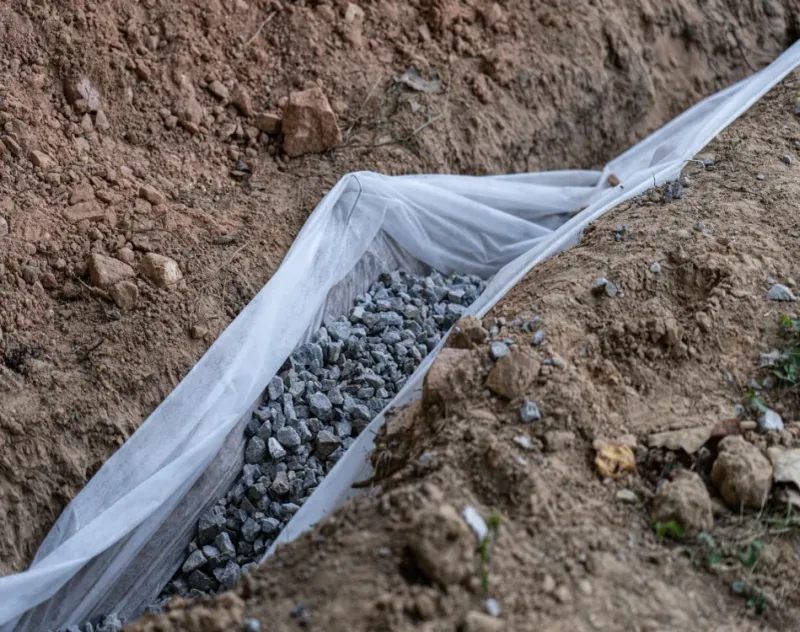
“Do you know your soil type? Ignoring soil conditions when installing a French drain is a frequent oversight. Clay-heavy soils, for instance, complicate drainage due to their dense nature. Understanding your soil can inform necessary adjustments, such as increasing gravel depth or adding extra drainage paths. Conduct a soil test to determine composition, and consult with experts if needed. Tailoring your drain system to the soil conditions ensures better water management and a drier lawn, despite challenging soil types.”
Overlooking Maintenance Needs
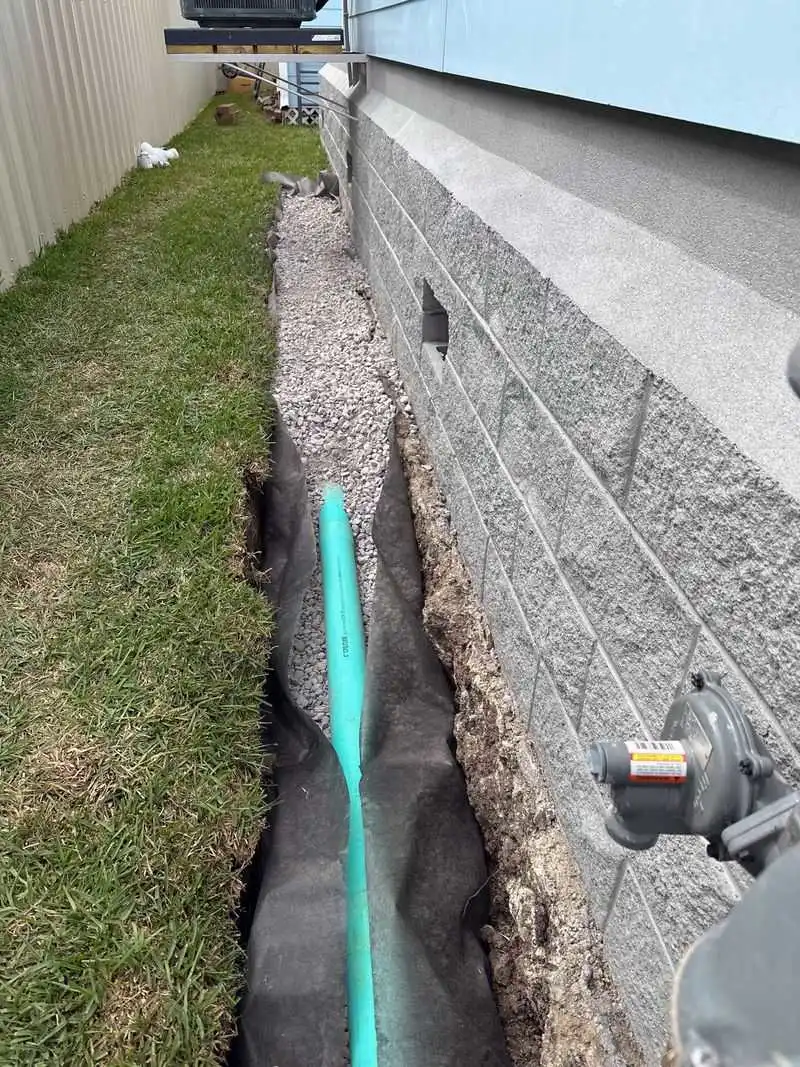
“Think your French drain doesn’t need upkeep? Think again! Regular maintenance is crucial to prevent blockages and ensure long-term functionality. Overlooking this can lead to a system overwhelmed with debris, causing water to back up and lawns to become swamps. Schedule routine checks to clear debris, monitor water flow, and ensure the slope remains consistent. Simple tasks like removing leaves and checking for pipe obstructions can extend your system’s life, keeping your lawn consistently dry and well-drained.”
Incorrectly Sized Drainage Pipes
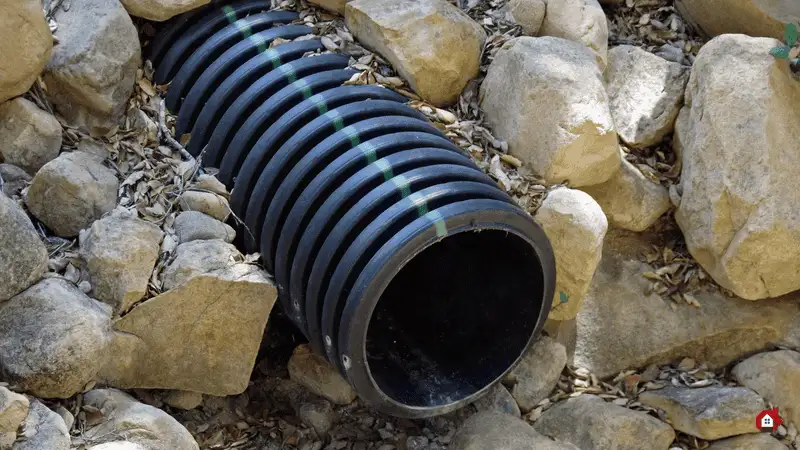
“Ever wondered if the pipe size matters? It does—immensely. Using pipes too small for the water volume can lead to overflow and ineffective drainage. Assess the drainage needs of your yard and choose pipes accordingly. Typically, a 4-inch diameter pipe suffices for most residential properties. However, larger areas with heavy runoff might require bigger pipes. Correct sizing ensures your French drain can handle any water load, preventing unwanted sogginess and ensuring efficient lawn drainage.”
Incorrect Outlet Placement

“Where does your French drain drain? Outlet placement is critical and often mishandled. An outlet opening into low areas or near structures can cause pooling and foundation issues. Plan the outlet location carefully, directing water to a safe discharge area like a garden or storm drain. Ensure the outlet is at the lowest point, allowing gravity to assist the water flow. Correct outlet placement secures your lawn’s dryness and prevents water-related damage to surrounding structures.”
Failure to Compact Soil
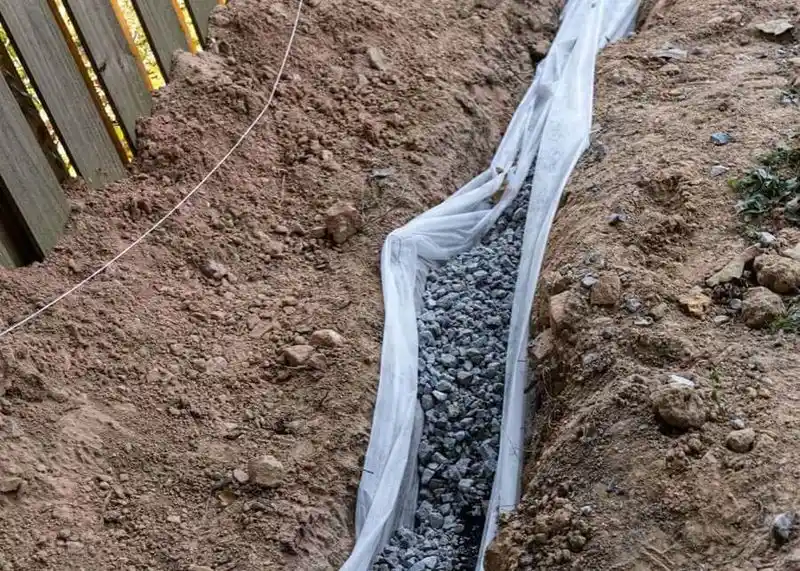
“Think compacting soil isn’t necessary? This oversight can lead to major drainage issues. Without compacting, soil around the drain may settle unevenly, creating pockets where water collects. After pipe installation and backfilling, properly compact the soil to stabilize the area. Using a hand tamper or mechanical compactor ensures the soil stays in place, maintaining the drain’s integrity and function. This step is essential to avoid future drainage headaches and to keep your lawn free from soggy spots.”
Improper Trench Depth
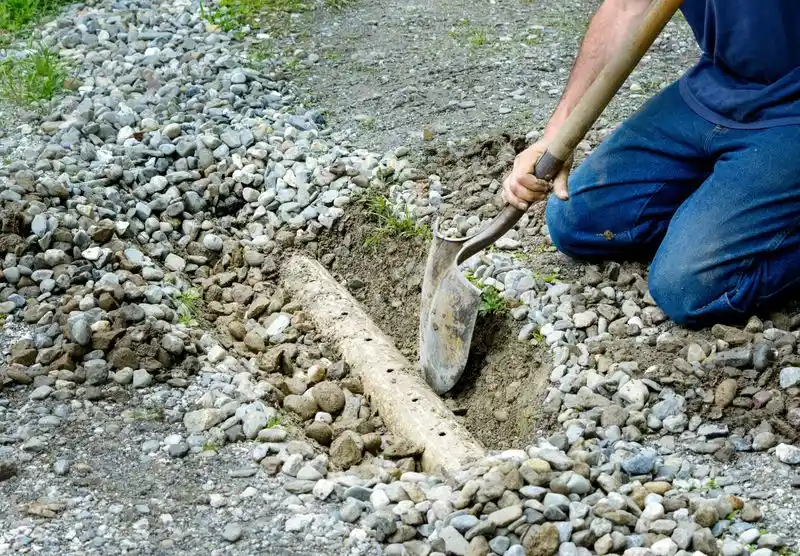
“Trench depth can make or break your French drain’s success. A shallow trench fails to gather adequate water, leaving your lawn wet. Digging deeper, ideally 18-24 inches, allows the drain to capture more runoff and direct it away efficiently. Plan your trench depth according to your yard’s specific drainage needs. Ensuring the trench is deep enough not only maximizes water collection but also prolongs the system’s effectiveness, resulting in a dry and healthy lawn.”

